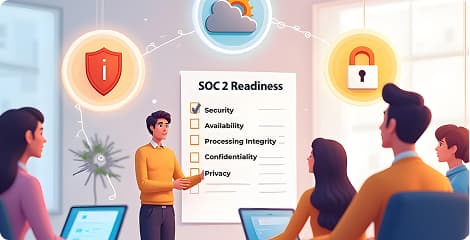The dynamics of product engineering are changing, and for good. For decades, the way software products were built rarely changed: assemble a team of engineers, assign clear roles, manage sprints, and scale headcount as the product and customer base grew. This model worked well in a predictable environment. But, now, even SaaS product development has fundamentally shifted.
Engineering leaders are juggling between a perfect storm of challenges:
- Tight deadlines: In competitive SaaS markets, the speed of feature rollout often defines winners and losers.
- Complexity creep: Cloud architecture, microservices, and security standards add layers of intricacy to every release.
- Talent strain: Skilled engineers are more expensive and harder to retain, making scaling by adding people unsustainable.
These forces have left founders, CTOs, and product leaders asking the same question:
how can we scale product development without scaling costs and teams linearly?
The answer is, Agentic AI, the next gen of artificial intelligence in software engineering. Unlike traditional AI tools that act as reactive assistants, Agentic AI functions as a self-directed partner. It can analyze requirements, generate code, run unit tests, and even fix issues autonomously. And, unlike what some might fear, it isn’t about replacing engineers, but redefining the engineering team itself.
This is where the “80:20 Engineering Team” concept comes in:
- 80% of development tasks powered by AI-driven automation
- 20% guided by human creativity, strategy, and oversight
In other words, SaaS companies no longer need large engineering armies to keep pace with product demands. A leaner human team, when paired with Agentic AI, becomes a force multiplier, achieving outcomes that traditionally required 4–5x more engineers. This results in SaaS companies now building and iterating products with a fraction of the team size, and achieving 5x faster development cycles without burning out human engineers or blowing up budgets.
Understanding the 80:20 Engineering Team Model
The 80:20 Engineering Team represents a new operating vision where efficiency, not headcount, dictates success. It combines two powerful principles into one framework:
1. 80:20 in Task Execution:
- AI agents automate up to 80% of repetitive, routine, and low-complexity tasks, from code generation to testing and bug-fixing.
- Human engineers provide the remaining 20%, focusing on architecture design, innovation, and strategic validation.
2. 80:20 in Team Composition:
- With AI as a co-engineer, only 20% of the traditional team size is needed to deliver 100% of the expected results.
- A product team that previously required 50 engineers might now function with 10, yet maintain the same (or even superior) velocity and quality.
How Agentic AI Differs from Assistive AI
Conventional AI assistants act like autocomplete tools, reactive and constrained by prompts. Agentic AI, by contrast, acts as an autonomous engineering agent: it plans tasks, executes workflows, tests outcomes, and optimizes results continuously. The difference is similar to having an intern who needs constant instructions versus a senior engineer who independently drives tasks to completion.
Key Benefits of the 80:20 Model:
- Amplified Productivity: AI takes care of the bulk, while lean teams focus on differentiation and strategy.
- Lean but High-Impact Teams: What once required large squads of engineers can now be done by carefully chosen specialists supported by Agentic AI.
- Innovation Surplus: Freed from mechanical tasks, human engineers redirect energy into creating unique features, improving system scalability, and experimenting with new architectures.
- Scalability Without Linear Costs: Businesses can expand their product footprint without growing payrolls at the same rate.
The 80:20 model is not about downsizing humans, it’s about delivering exponential leverage. With Agentic AI, a smaller, sharper human team can achieve outcomes once thought impossible under traditional models.
If traditional engineering teams resemble craft workshops, Agentic AI-powered teams operate like automated factories with precision human operators. The difference isn’t just in speed but in how the rhythm of development itself changes, from linear and manual to parallel and autonomous.
1. Automated Code Generation
Instead of engineers writing every line from scratch, AI agents generate production-ready modules directly from requirements or specifications. Modern Agentic AI understands frameworks, APIs, and even team-specific coding conventions, enabling modules to be assembled in hours rather than days. This frees developers to work on higher-order design problems instead of mechanical coding tasks.
2. Instant Testing & Debugging
Quality assurance has historically been one of the most time-consuming phases of development. With Agentic AI, every block of generated code is immediately stress-tested, scanned for vulnerabilities, and corrected in the moment. Issues that once sprawled across entire bug-fix sprints are caught and resolved as they emerge, keeping projects moving forward without stalls.
3. Rapid Prototyping & MVPs
MVP launches are often delayed by the heavy lifting required for basic functions like authentication, payments, or integrations. Agentic AI scaffolds these components rapidly while engineers zero in on the differentiating features that win user adoption. This shift allows startups to put a working version of their product in customers’ hands in days, gathering meaningful feedback before competitors have even finished scoping.
4. Parallel Task Execution
Human teams invariably hit bottlenecks because the number of engineers constrains how much can move forward at once. Agentic AI breaks this limit by taking on multiple tasks simultaneously, one agent building APIs, another managing backend logic, and another stress-testing performance. Progress across modules happens in parallel, accelerating timelines without requiring larger teams.
5. Knowledge Retention & Reusability
Institutional memory has always been a fragile asset in engineering: when people leave, knowledge leaves with them. Agentic AI, however, retains workflows, optimizations, and learnings across projects, continuously reinforcing its performance. Each new build becomes faster and more efficient, because the lessons of past work never dissipate.
Together, these shifts explain why teams adopting the 80:20 model consistently report development cycles that are several times faster than before. The workload that normally strained entire squads is compressed into leaner, more fluid efforts, with fewer slowdowns, cleaner releases, and a relentless forward pace in product innovation.
While the 80:20 model sounds strategic on paper, its real potential is evident when applied to everyday challenges in SaaS product execution. These examples highlight how Agentic AI transforms what once felt like bottlenecks into accelerators of growth.
1. Feature Rollouts at Scale
When a SaaS platform introduces a new feature, say, a collaboration tool across enterprise accounts, the workload often tilts heavily toward backend integration, regression testing, and data consistency. Agentic AI manages these layers autonomously, leaving human engineers free to refine the user experience and ensure adoption feels natural to customers. As a result, what would have demanded weeks of coordination and manual testing is compressed into days, allowing quicker delivery cycles with fewer risks.
2. Legacy System Migration
Migrating from outdated frameworks to modern stacks has traditionally meant allocating entire teams to tedious code porting and validation work. With Agentic AI, legacy code is scanned, interpreted, and rewritten for modern environments automatically, while engineers focus on validating performance and refining architecture. Projects that once threatened to stall roadmaps are now completed at a pace that keeps innovation momentum intact.
3. Continuous Deployment Pipelines
CI/CD pipelines are the nervous system of any SaaS platform, yet maintaining them often consumes disproportionate engineering effort. AI agents now autonomously oversee deployment schedules, run integration tests, and roll back failures instantly. This creates a deployment rhythm so seamless that users notice improvements in product stability and release regularity, but rarely glimpse the complexity behind it.
4. Bug Hunting at Scale
For SaaS platforms with high traffic, unexpected glitches can create ripple effects across global user bases. Instead of waiting for bug reports or pouring over endless log files, AI agents continuously monitor live systems, detect anomalies, and apply fixes instantly. The shift is dramatic, problems are resolved before they reach customers, and engineering teams are no longer trapped in cycles of reactive firefighting.
In the 80:20 engineering model, the contribution of human engineers doesn’t diminish, it evolves. As AI agents take on repetitive coding, testing, and maintenance, people step further into roles that require judgment, creativity, and strategy.
The most immediate shift is in strategic decision-making. Humans remain the architects of system design, responsible for setting technical direction, prioritizing features, and weighing tradeoffs. AI can optimize for performance or efficiency, but it cannot decide whether a product should integrate with Salesforce or build a new analytics module, those are calls that derive from business context and market positioning.
There is also the matter of complex architecture design. While AI agents are excellent executors within frameworks, designing distributed systems at scale, creating modular architectures that can sustain thousands of tenants, or mapping data security frameworks across multiple geographies requires human foresight. These are challenges of abstraction, and abstraction remains a uniquely human strength.
Equally important are the layers of ethics, compliance, and trust. AI can flag potential risks, but questions around user privacy, bias, security exposure, and regulatory alignment demand human oversight. A CTO or lead architect must interpret compliance obligations and ensure that AI-driven outputs adhere to standards that machines, by themselves, cannot fully grasp.
Engineers within 80:20 teams therefore move up the value chain, becoming orchestrators rather than operators. Instead of writing every line of boilerplate code, they guide AI systems, validate their work, and stitch together outputs into cohesive, scalable products. In this setup, fewer people achieve far greater results, leveraging technology to amplify their impact.
To thrive in this environment, engineers need to develop new skill sets.
These include:
- AI literacy: understanding how Agentic AI functions and how to effectively direct it.
- System-level thinking: focusing on design patterns, integrations, and long-term scalability.
- Product mindset: bridging technical and business perspectives to guide development priorities.
The engineers who excel in 80:20 teams are not the ones who can code faster, but those who can think bigger, anticipate risks, and direct AI resources toward the most meaningful outcomes.
For all its promise, transitioning to an AI-first engineering model is not without hurdles. Leaders must anticipate cultural, technical, and organizational challenges to ensure success.
The first and most human challenge is skepticism from engineering teams. Developers who’ve invested years refining their craft may question the role of AI agents, fearing obsolescence or loss of control. Addressing this concern requires clear communication: AI is not here to replace engineers, but to remove the repetitive burdens that prevent them from focusing on higher-impact work. Organizations that position AI as an enabler rather than a threat tend to drive smoother adoption.
A second challenge lies in training AI with quality data. Agentic AI systems are only as good as the information they are exposed to. Biased, incomplete, or outdated datasets can lead to flawed outputs. Companies must therefore invest in curating clean, representative training data as well as establishing continuous feedback loops from human engineers to refine AI performance over time.
There is also the delicate matter of balancing automation with human creativity. If the pendulum swings too far toward automation, teams risk producing technically sound but uninspired products that fail to differentiate in the market. Sustained success comes from preserving a deliberate role for human imagination, using AI as a multiplier, not a replacement, of innovation.
Finally, leaders cannot overlook transparency and accountability. With AI handling a majority of execution, companies must ensure that the decision-making chain remains clear. For instance, if an AI-generated security patch causes performance degradation, who is accountable? Establishing governance frameworks, audit trails, and explainability protocols becomes essential in maintaining trust both inside engineering teams and with enterprise customers.
For SaaS founders and CTOs, the true measure of any transformation lies in its business results. The 80:20 model delivers not just faster engineering cycles, but a decisive economic advantage. By automating 80% of the development workload with Agentic AI, companies reduce their reliance on large engineering teams, driving down headcount costs while keeping velocity high. Engineering no longer scales in direct proportion to payroll, an inflection point that fundamentally changes the SaaS cost structure.
This shift directly translates into faster time-to-market. Products that once required nine to twelve months to mature can now launch in a fraction of that time. New features roll out continuously, creating a cadence of innovation that customers notice and competitors struggle to match. For investors and enterprise buyers alike, that pace of execution signals not just efficiency but resilience, the ability to adapt quickly to whatever the market demands next.
Equally important is long-term scalability without proportional cost increases. Traditionally, doubling your customer base meant adding more engineers, QA specialists, and DevOps support. With Agentic AI as the backbone of development, growth can expand geometrically while costs rise incrementally. That curve, breaking the linear relationship between scale and spending, is what gives companies using the 80:20 model a durable competitive advantage.
But beyond metrics and margins, the model represents a philosophical shift in how products are built. It’s a move from brute-force engineering to intelligent amplification. It proves that smaller teams, when empowered with the right systems, can deliver results once reserved for much larger organizations. 80% of the work, executed by 20% of the people, still delivering 100% of the results.
For decision-makers, the path forward doesn’t require a full leap into AI-driven development from day one. The most successful adopters begin by integrating Agentic AI into discreet workflows, automating test pipelines, co-developing boilerplate code, or letting AI manage routine bug fixes. Once trust builds, the reliance grows naturally, and the engineering culture shifts from skepticism to empowerment.
Conclusion
SaaS companies that take this step now will position themselves ahead of the coming wave. Those that wait risk being outpaced by competitors who can deliver more with less, faster than ever before.
The 80:20 team is not a thought experiment. It is happening today. And for leaders seeking growth without proportional strain, it represents a rare opportunity: to reimagine how products are built, how teams operate, and how innovation scales.
At Invimatic, we build intelligent AI Agents that help SaaS companies adopt the 80:20 model with ease. Our expertise in Agentic AI enables leaner teams to deliver products faster, smarter, and at scale. Partner with us to transform your engineering team into a true 80:20 powerhouse.






Your email address will not be published. Required fields are marked *